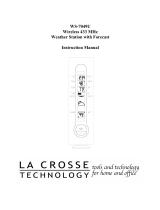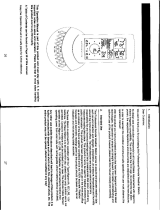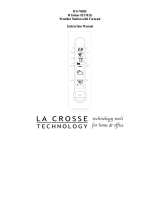
17
Problem: No outdoor temperature is
displayed.
Solution:
1. Remove all batteries, reinsert into
remote temperature sensor first, then
into the indoor weather station.
2. Place remote temperature sensor
closer to the indoor weather station.
3. Be sure all batteries are fresh.
4. Place remote temperature sensor and
indoor weather station in position so
the straight-line signal is not passing
through more than two or three
walls.
Problem: Temperatures do not match if
units are placed next to each other.
Solution:
Each temperature sensor is manufactured
to be accurate to within 1 degree plus or
minus and under normal conditions, so
two sensors could be as much as 2
degrees different. However, the difference
can be exaggerated further because the
sensors are designed for different working



























